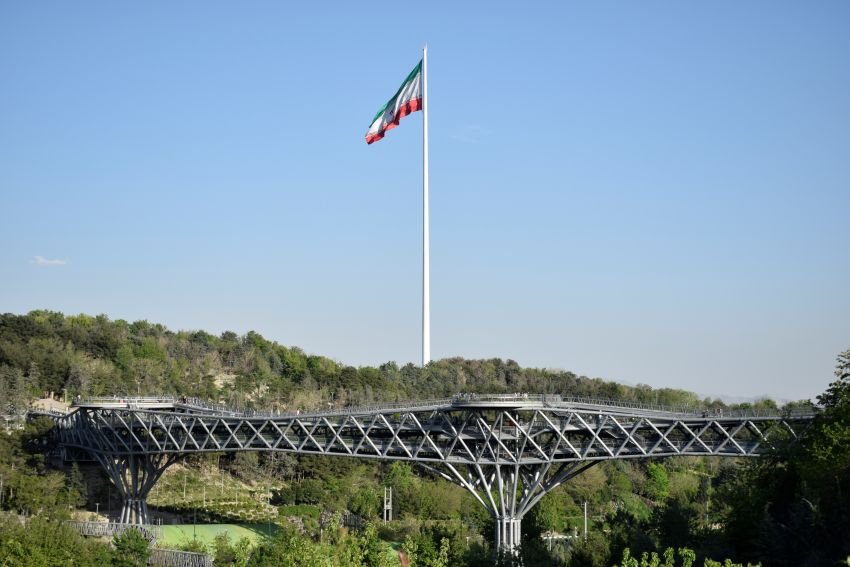Spiritual Travel
Rome Becomes a Global Center of Booming Youth Pilgrimage, Spiritual Awakening, Cultural Unity, and Rapidly Boosting Tourism but What Does the Historic Jubileo dei Giovani and Holy Jubilee Celebration Mean for Future Travelers to Italy

Thursday, July 31, 2025
From 28 July and 3 August 2025, Rome had served as the vibrant centre of the Youth Jubilee, one of the most significant events of the Holy Year, drawing hundreds of thousands, potentially up to one million young pilgrims. They recalled that the week reached its peak during a solemn Prayer Vigil on 2 August, and a grand Mass at Tor Vergata on 3 August, events many compared to a scaled-down World Youth Day, notable for its enthusiasm and global attendance.
They emphasised that Rome had braced for severe summer heat—32–34 °C—prompting organisers to deploy extensive cooling measures: millions of water bottles, widely scattered refill stations, powerful misting cannons, and shaded rest zones to protect the densely packed crowd from overheating.
Accommodation efforts were described as monumental: more than 370 parishes, nearly 400 schools and gyms, and numerous host families transformed into provisional lodging. The Fiera di Roma exhibition centre alone housed 25,000 people, effectively forming a temporary city equipped with round-the-clock medical support.
They noted that logistics and security planning had also been extremely demanding. Over 4,600 staff, including law enforcement, civil protection teams, and volunteers, had managed the event. They expanded public transport, reinforced rail services, and activated crowd‑control centres to maintain smooth mobility for both pilgrims and everyday city traffic.
Economic Outlook vs. Reality
Planners had anticipated that over 30 million pilgrims would visit Rome during the Jubilee year, leading to an estimated 105 million overnight stays and generating up to €17 billion in spending, with about €4–4.5 billion benefiting the city directly. This projection far exceeded figures from the Jubilee of 2000.
Yet it was reported that the results did not entirely match forecasts. Many bed-and-breakfast operators and holiday rental owners claimed that bookings dropped 60–75% in early 2025 compared to prior years, as many pilgrims opted for cheaper group accommodations like parish halls and school dormitories rather than traditional rentals. Consequently, actual spending fell well short of expectations.
They also highlighted the growth of short-term rentals, which had pushed housing costs upward in central neighbourhoods. Many residents reportedly felt pressured out of their homes, intensifying the urban housing crisis and sparking discontent among locals and urban planners who questioned the sustainability of such large-scale religious gatherings in dense city spaces.
Travel Patterns and Global Visitor Mix
Observers recalled that pilgrims represented 146 countries, with approximately 78% from Europe, but also significant contingents from Iraq, Ukraine, Syria, Lebanon, and South Sudan—regions marked by conflict. This diversity was interpreted as reinforcing the Jubilee’s message of global solidarity and peace, offering a space for spiritual encounter beyond national boundaries.
Reports also suggested that many non-religious tourists had consciously avoided the city during peak Jubilee periods, deterred by crowded streets, higher prices, and limited lodging availability. Instead, they chose to postpone their visits or explore other Italian regions.
On travel forums, residents and advisors were quoted warning that Rome could be twice as busy, with higher costs, increased likelihood of scams, and more congestion in the historic centre. Some travel advisors reportedly recommended clients consider alternative destinations entirely to avoid the Jubilee influx.
Operational Challenges and Infrastructure Response
Event organisers were said to have executed a sweeping programme of infrastructure upgrade, including expanded public transit, crowd‑control zones, enhanced medical and hydration points, and creative public space activation—transforming plazas and parks into venues for worship, concerts, and cultural exchange.
They added that each pilgrim had received a dedicated pilgrim kit—containing essentials like water, backpacks, rosaries, sun hats, and meal vouchers. They coordinated around 4,000 volunteers, ensuring that technology supported human interaction rather than replacing it. A recurring lesson emphasised was that digital platforms should deepen—not detract from—community engagement and spiritual connection.
They further emphasised that investments made in public works—urban renovations, expanded metro lines, pedestrian zones, and enhanced signage—were intended not only for Jubilee use but to leave a long-term improvement in city accessibility and aesthetics.
Travel Industry Implications
They implied that destination managers and travel professionals should take note of the following key industry impacts:
- Youth-focused pilgrimage events can transform a city’s international image, presenting it as both spiritual and vibrant.
- Capacity planning is essential: cities must ensure infrastructure—transport, lodging, healthcare—is scalable and socially inclusive.
- Social media storytelling by participants can powerfully reshape how a destination is perceived by younger demographics.
- Economic gains depend on local business inclusion: supporting small and medium enterprises ensures that surge events benefit communities, not only visitors.
- High footfall does not always equate to high profits—especially when many visitors choose low-cost communal accommodations and non-believer tourists stay away.
Global Traveler Experience
They observed that the Jubilee’s global footprint had influenced traveller expectations worldwide. Pilgrims came not just for rituals but to experience unity with global peers, which travellers outside the event interpreted as either an attraction or a deterrent. For young prospective pilgrims, the Jubilee became a compelling journey of spiritual and cultural immersion. Conversely, casual tourists often perceived the city as overcrowded, prompting interest in visiting off-peak seasons or alternative destinations like Emilia‑Romagna, Puglia, or southern France.
Broader Economic and Urban Effects
They reported that while Jubilee-related spending boosted restaurant, souvenir, and transport sectors, it also triggered challenges:
- Overbooked lodging systems and staff shortages were common complaints.
- Local employment grew in hospitality, construction, and event management sectors—yet housing affordability deteriorated, fueling protests and calls for regulation of short‑term rentals.
- Air travel connectivity faced setbacks: one major airline reportedly reduced capacity at Fiumicino and Ciampino over rising fees and regulatory constraints, potentially affecting Rome’s ability to welcome up to 32 million visitors.
Sector-Wide Outcomes for Travel
They pointed out that successful hosting of mega-events like the Jubilee required integrating long-term infrastructure planning, urban resilience, and community engagement, not just event-day logistics. They stressed that sustainability and social equity must be embedded in planning to avoid burdening host cities and disenfranchising residents.
Final Indirect Reflections
They concluded that the Youth Jubilee 2025 in Rome had been imagined as a monumental spiritual gathering with tremendous potential for tourism and economic uplift. Organisers delivered an impressive logistical and infrastructural effort, while millions participated in a shared ritual of faith and hope. Yet it became apparent that projected economic windfalls were overstated: many pilgrims chose communal lodging, non-religious visitors deferred travel, and housing costs disrupted local life. Despite these complications, the event provided valuable lessons: youth engagement, strategic infrastructure investment, harnessing community-driven branding, and ensuring that hospitality growth also supports urban sustainability. For future destinations aiming to host mass religious or cultural events, the overarching insight was clear: deep planning, thoughtful logistics, and community-centred design are just as critical as the spiritual and symbolic dimensions.
Spiritual Travel
India Faith-Based Tourism Market Growth by 2032: Key Destinations Like Varanasi, Amritsar, Rishikesh, Ajmer, and Shirdi to Drive Future Expansion

Saturday, August 2, 2025
The India faith-based tourism market is a dynamic and expanding sector within the broader tourism industry, drawing millions of devotees and travelers to the country’s sacred sites. These destinations, rich in cultural and spiritual heritage, have long been magnets for those seeking a deeper connection to their religious beliefs. In recent years, the sector has experienced significant transformation, driven by factors such as enhanced infrastructure, digital booking platforms, government initiatives, and evolving consumer preferences for experiential travel. As the market continues to grow, destinations like Varanasi, Amritsar, Rishikesh, Ajmer, and Shirdi are poised to play key roles in shaping the future of India’s faith-based tourism market by 2032.
Market Overview
India has long been a hub for spiritual and religious tourism, attracting pilgrims from around the world. With a population deeply rooted in various faith traditions, the country’s tourism market has witnessed a steady increase in the number of travelers visiting religious sites for both spiritual and cultural experiences. In 2025, the India Faith-Based Tourism market is estimated to be valued at USD 1,361.1 million, and it is expected to grow substantially, reaching USD 3,689.5 million by 2032. This represents a compound annual growth rate (CAGR) of 15.0% from 2025 to 2032, highlighting the sector’s rapid expansion.
As faith-based tourism becomes an increasingly significant contributor to India’s tourism economy, destinations that blend spirituality with cultural experiences are attracting not only domestic pilgrims but also international travelers. These sites are no longer just places of worship but have become destinations that offer holistic travel experiences, combining wellness, culture, and history.
Key Drivers of Growth in Faith-Based Tourism
The growth of India’s faith-based tourism market can be attributed to several key factors:
- Organized Pilgrimage Tours: A significant driver of this market’s growth is the increasing demand for structured pilgrimage tours. In 2024, over 45 million travelers participated in organized faith-based travel packages, reflecting a 20% year-on-year increase. This surge underscores the growing preference for curated spiritual experiences that offer convenience, comfort, and personalized itineraries. Pilgrims are seeking more organized, well-managed travel experiences that cater to their spiritual needs.
- Technological Advancements: The digitalization of the tourism sector has played a pivotal role in streamlining access to faith-based travel experiences. Online travel platforms, mobile applications, and payment solutions have simplified the booking process for both domestic and international tourists. The convenience of booking pilgrimage tours online has resulted in an 18% increase in average transaction value for faith tourism-related bookings in 2024. The accessibility of digital tools has not only improved user engagement but also expanded market reach.
- Infrastructure Improvements: Regional connectivity has significantly improved, especially in states with major pilgrimage sites like Uttarakhand and Tamil Nadu. Investments in dedicated airport and rail infrastructure have made travel to these religious sites more accessible, resulting in a 12% increase in pilgrimage footfalls in these regions. Enhanced transport connectivity ensures that devotees can reach their destinations more quickly and comfortably, fueling growth in faith-based tourism.
- Wellness and Cultural Integration: Another key trend influencing the growth of faith-based tourism is the integration of wellness and cultural experiences into pilgrimage itineraries. Increasingly, travelers are seeking experiences that blend spirituality with personal well-being. Studies indicate that in 2025, 30% of faith-based travelers are opting for packages that combine spiritual activities with wellness retreats. This trend is broadening the scope of faith tourism, allowing it to attract a more diverse group of travelers.
Emerging Faith-Based Destinations in India
While traditional pilgrimage routes like the Char Dham, Vaishno Devi, and Golden Temple in Amritsar continue to draw millions of pilgrims each year, several emerging destinations are expected to play an increasingly important role in the country’s faith-based tourism landscape by 2032. These destinations are capitalizing on their spiritual significance, improved infrastructure, and integrated tourism offerings.
1. Varanasi: The Spiritual Capital of India
Varanasi, one of the oldest cities in the world, remains a central destination for pilgrims and tourists alike. As a major Hindu pilgrimage center, Varanasi attracts millions of visitors each year. The city’s ghats, temples, and spiritual aura make it a must-visit for anyone seeking a deeper connection to Hinduism. The growing popularity of Varanasi as a faith-based tourism destination is further supported by its expanding infrastructure, including new flight routes and improved amenities for tourists. By 2032, Varanasi is expected to see a significant rise in visitor numbers, with more travelers seeking spiritual and cultural experiences.
2. Amritsar: A Center for Sikh Pilgrimage
Amritsar, home to the Golden Temple, is one of India’s most important pilgrimage destinations for Sikhs. The city’s cultural and religious significance, coupled with its vibrant history, makes it a prime destination for spiritual tourism. The growing number of international travelers, especially from the Sikh diaspora, is contributing to Amritsar’s rise as a major faith tourism hub. By 2032, the city is expected to see further growth in both domestic and international visitor numbers, particularly as tourism infrastructure continues to improve.
3. Rishikesh: The Yoga and Spiritual Hub
Rishikesh, known as the “Yoga Capital of the World,” has seen a surge in tourism, particularly from international travelers seeking spiritual experiences. Located on the banks of the Ganges River, Rishikesh is not only a major Hindu pilgrimage site but also a destination for wellness and yoga retreats. The combination of spirituality, wellness, and adventure tourism has made Rishikesh an attractive destination for modern-day pilgrims. Its popularity is expected to grow, with more travelers seeking to combine their spiritual journeys with health and wellness activities.
4. Ajmer: A Hub for Sufi Pilgrimage
Ajmer, home to the revered Sufi shrine of Khwaja Moinuddin Chishti, attracts millions of Muslim pilgrims each year. The city’s significance in the Sufi tradition makes it one of India’s most important pilgrimage centers for Muslims. The growing interest in Sufi culture and spirituality, combined with improved accessibility and infrastructure, is driving the growth of Ajmer as a faith tourism destination. The city’s religious and cultural offerings are expected to attract even more visitors by 2032.
5. Shirdi: The Seat of Sai Baba’s Legacy
Shirdi, the home of Sai Baba, continues to be a major pilgrimage destination for millions of devotees. The temple complex and the surrounding town have seen significant developments in infrastructure, making it easier for pilgrims to visit. The growing number of travelers, particularly from Maharashtra and neighboring states, is expected to drive growth in Shirdi’s faith-based tourism sector. With continued investment in facilities and services, Shirdi is set to become an even more prominent destination for religious tourism in the coming years.
Conclusion
India’s faith-based tourism market is poised for substantial growth by 2032, driven by factors such as organized pilgrimage tours, technological advancements, infrastructure development, and the integration of wellness and cultural experiences. As the sector expands, destinations like Varanasi, Amritsar, Rishikesh, Ajmer, and Shirdi will play crucial roles in attracting pilgrims and travelers seeking spiritual fulfillment. With a forecasted CAGR of 15.0%, the India faith-based tourism market is set to become a significant contributor to the country’s overall tourism economy, offering a wide range of opportunities for growth and development in the coming years.
Spiritual Travel
Tehran Hosts Martyrs of Power Memorial Rally: A Family-Focused Spiritual Tour

Friday, August 1, 2025
On Thursday, Tehran’s Martyrs of Power Memorial family rally honored the sacrifices of war veterans and martyrs from the 12-day conflict between Israel and Iran. The rally has become a symbol of remembrance and unity. It was organized with the strong support of the families of martyrs, veterans, and self-sacrificing veterans. This emotional gathering aimed to honor the memories of those who gave their lives and to promote cultural unity through family involvement and spiritual tourism in the city.
A Journey of Remembrance and Unity
The rally was supported by the Touring & Automobile Club of the Islamic Republic of Iran’s Committee for Martyrs and War Veterans’ Family Affairs, in collaboration with Tehran’s Foundation of Martyrs and Veterans Affairs. Over 160 participants took part in the rally, which included 48 cars and took the participants through key historical and spiritual locations in Tehran. The event highlighted the deeply rooted values of sacrifice and martyrdom within Iranian culture, with a focus on promoting familial bonds and social cohesion.
The family rally commenced at the Tomb of the Unknown Martyrs, located in the northeastern part of Tehran, an iconic site where many heroes are commemorated. This destination is symbolic, as it represents the nation’s collective remembrance of its fallen soldiers. From there, the rally headed towards Behesht-e Zahra Cemetery, located in the southern part of Tehran. This cemetery, which is a key cultural and spiritual landmark in Iran, is the final resting place of many martyrs who lost their lives during the Iranian Revolution and the subsequent wars.
A Focus on Spirituality Over Competition
Unlike typical rallies that emphasize speed and competition, the Martyrs of Power Memorial rally was structured as a spiritual journey. The event did not revolve around racing or time trials; instead, it was designed to foster a sense of spiritual and cultural reflection among its participants. The judging panel focused on several aspects of the rally, including adherence to traffic laws, safety principles, accuracy in routing, team discipline, and overall traffic discipline. This approach helped to ensure that the rally was a peaceful and respectful occasion, in line with the event’s overall purpose of promoting unity and cultural values.
Honoring Martyrs and Promoting Family Ties
The culmination of the rally took place at the Nodbeh Hall of Behesht-e Zahra Cemetery, where the best participants of the rally were recognized and celebrated for their commitment to the principles of the event. The closing ceremony, which included officials from the Touring & Automobile Club of Iran and the Foundation of Martyrs and Veterans Affairs, was a moment of reflection, where participants reaffirmed their respect for the martyrs and their commitment to upholding the values of the Islamic Revolution.
In a moving gesture, participants placed flowers at the tombs of martyrs who died during the imposed 12-day war, paying tribute to their sacrifices. This moment marked the emotional high point of the rally, as participants renewed their pledge to continue honoring the ideals of the martyrs and the cultural legacy of sacrifice. The event provided an opportunity for families to come together in a cultural and spiritual atmosphere, strengthening familial bonds and deepening their connection to Iran’s rich history and values.
Preserving Cultural Heritage and Fostering Unity
The Martyrs of Power Memorial rally was much more than a mere remembrance event; it was an embodiment of Iran’s commitment to preserving the memories of its fallen heroes and imparting the values of selflessness, sacrifice, and patriotism to future generations. Through this rally, the public’s empathy and social cohesion were strengthened, and the significance of honoring the martyrs’ contributions to the nation was underscored.
The event also served as a platform for highlighting the cultural and spiritual tourism opportunities within Iran, which continue to attract domestic and international visitors interested in understanding the country’s deep-rooted traditions and historical significance. By focusing on the importance of family participation, the rally reinforced the importance of intergenerational communication and cultural transmission, ensuring that the memories of the martyrs remain alive for generations to come.
Conclusion: A Step Toward Promoting Cultural and Spiritual Tourism
The Martyrs of Power Memorial family rally is an important part of cultural tourism in Tehran and beyond. It combines historical remembrance with family-focused activities. This not only honors the martyrs but also encourages social unity and spiritual reflection. As Iran develops its cultural tourism sector, events like this will help preserve the nation’s heritage and create a sense of belonging among its citizens. By emphasizing sacrifice, patriotism, and unity, the rally shows the resilience and strength of the Iranian people.
Spiritual Travel
Spiritual Journeys, Business Plans, And Family Strain

Pisces Horoscope: Pisces is symbolised by the fish, representing duality, fluidity, and deep emotional currents. Governed by Neptune, the planet of dreams and spirituality, Pisceans are often described as intuitive, empathetic, and imaginative beings with a profound connection to the unseen realms. Your horoscope offers a roadmap for navigating life’s ebbs and flows, providing valuable foresight into career, relationships, health, and personal growth. With its emphasis on intuition and sensitivity, the horoscope encourages individuals to embrace their inner wisdom, trust their instincts, and explore the depths of their emotions.
Pisces Daily Horoscope (August 2):
[Disclaimer: The content of this article is based solely on astrological predictions, and should be taken as general guidance. Individual experiences may vary. ABPLive.com does not assert the accuracy or validity of any claims or information presented. It is strongly recommended to consult a qualified expert before considering or implementing any information or belief discussed herein.]
-

 Brand Stories2 weeks ago
Brand Stories2 weeks agoBloom Hotels: A Modern Vision of Hospitality Redefining Travel
-

 Brand Stories7 days ago
Brand Stories7 days agoCheQin.ai sets a new standard for hotel booking with its AI capabilities: empowering travellers to bargain, choose the best, and book with clarity.
-

 Destinations & Things To Do2 weeks ago
Destinations & Things To Do2 weeks agoUntouched Destinations: Stunning Hidden Gems You Must Visit
-

 Destinations & Things To Do7 days ago
Destinations & Things To Do7 days agoThis Hidden Beach in India Glows at Night-But Only in One Secret Season
-

 AI in Travel2 weeks ago
AI in Travel2 weeks agoAI Travel Revolution: Must-Have Guide to the Best Experience
-

 Brand Stories4 weeks ago
Brand Stories4 weeks agoVoice AI Startup ElevenLabs Plans to Add Hubs Around the World
-

 Brand Stories3 weeks ago
Brand Stories3 weeks agoHow Elon Musk’s rogue Grok chatbot became a cautionary AI tale
-

 Asia Travel Pulse4 weeks ago
Asia Travel Pulse4 weeks agoLooking For Adventure In Asia? Here Are 7 Epic Destinations You Need To Experience At Least Once – Zee News
-

 AI in Travel4 weeks ago
AI in Travel4 weeks ago‘Will AI take my job?’ A trip to a Beijing fortune-telling bar to see what lies ahead | China
-

 Brand Stories4 weeks ago
Brand Stories4 weeks agoChatGPT — the last of the great romantics













You must be logged in to post a comment Login